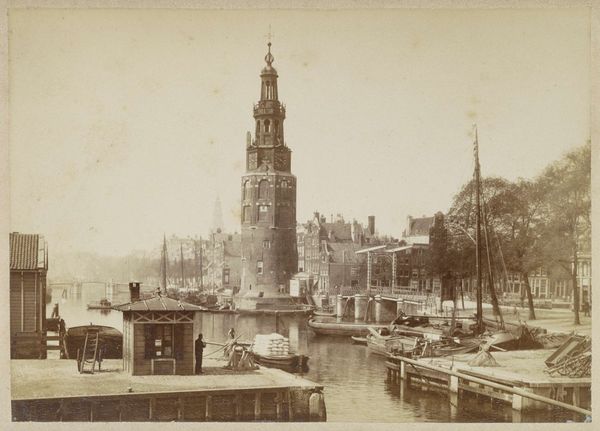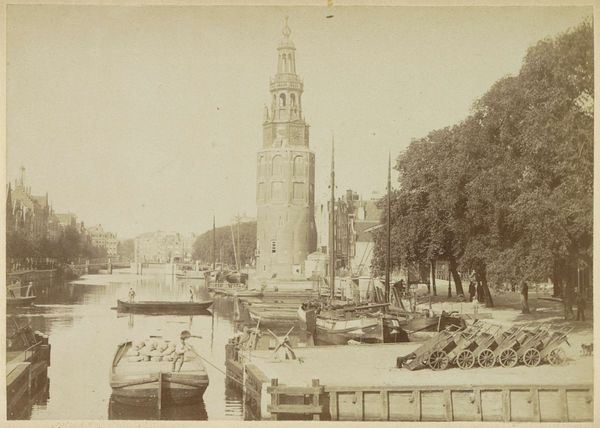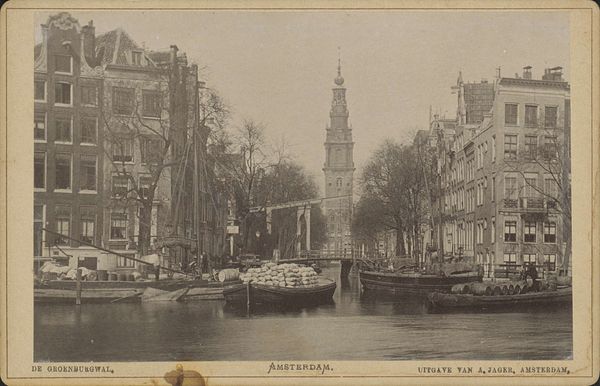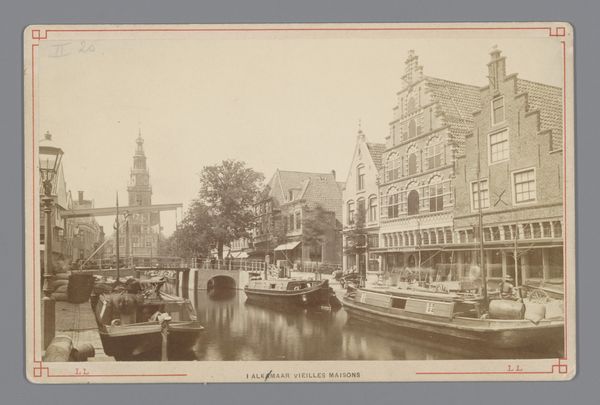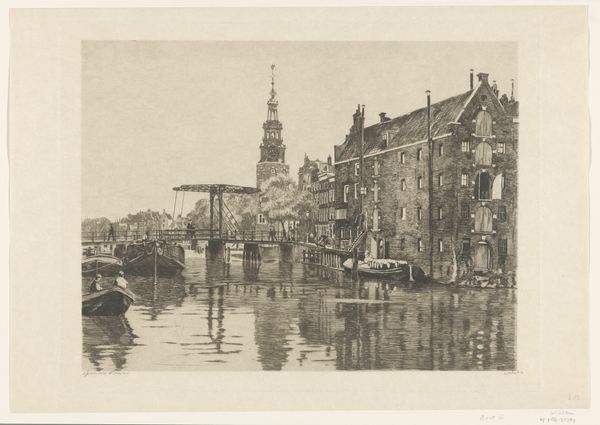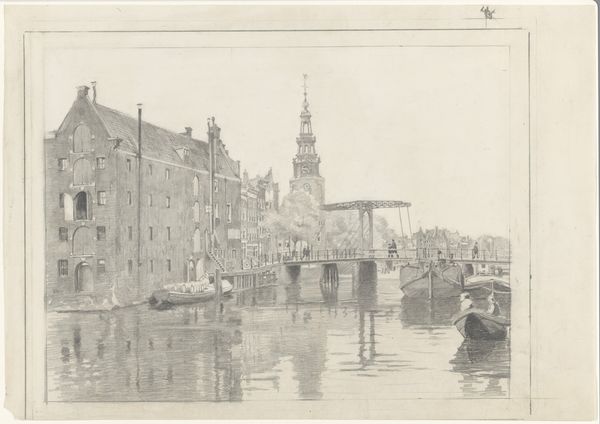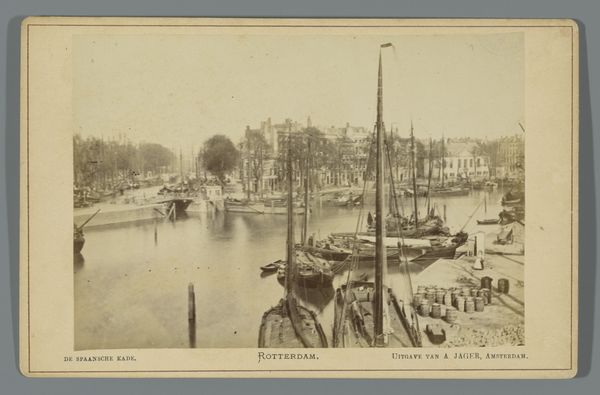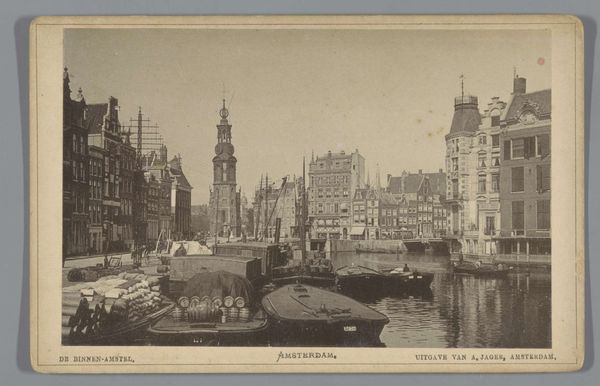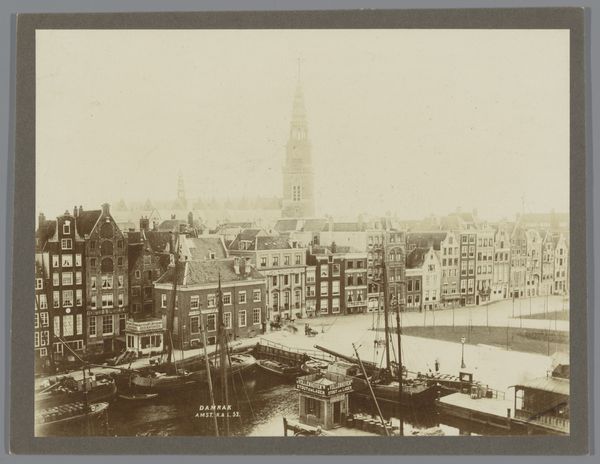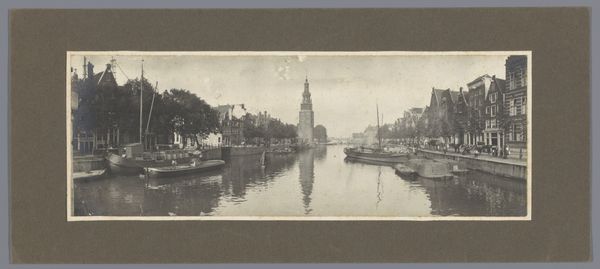
Oudeschans en Montelbaanstoren, gezien vanaf de oever van het IJ, Amsterdam c. 1880 - 1895
0:00
0:00
photography, gelatin-silver-print
#
dutch-golden-age
#
photography
#
historical photography
#
gelatin-silver-print
#
19th century
#
cityscape
Dimensions: height 96 mm, width 149 mm
Copyright: Rijks Museum: Open Domain
Editor: Here we have Andries Jager's "Oudeschans en Montelbaanstoren, gezien vanaf de oever van het IJ, Amsterdam," a gelatin silver print from around 1880-1895. There's such a stillness to this image; a quiet industriousness pervades the scene. What captures your attention when you look at this work? Curator: Immediately, I’m drawn to the relationship between the built environment and the water. How is access to water shaping civic life? Amsterdam, in this period, experienced rapid growth and social change. This image encapsulates the intimate relationship between the city and its waterways; what were the implications of that relationship for its diverse inhabitants? Did this connection to water lead to equitable access, or did it reinforce existing power structures related to trade, labour, and even hygiene? Editor: That's fascinating. I hadn't considered the social dynamics inherent in the landscape itself. It seemed such an objective depiction. Curator: "Objective" is a myth. Photography, then and now, is always framed through the photographer's choices, reflecting their socio-political context. Consider the vantage point and how that impacts the narrative being presented. Who had the access and agency to create such images and whose stories might be absent or marginalized? Who benefited from the depiction of a stable, prosperous Amsterdam? Editor: So, by analyzing these visual cues and thinking about the photographer's context, we can uncover deeper societal meanings embedded within what initially seems like a straightforward landscape? Curator: Exactly. It's about critically examining how art reinforces or challenges existing power structures and invites conversations about whose voices are heard and whose are not. Editor: I see now. I’ll never look at a cityscape the same way again! Thanks, that's given me so much to think about regarding photography and its ability to both reflect and shape perceptions of a city and its people. Curator: And thinking critically like that will serve you well in any future research, as a student and an active participant in culture.
Comments
No comments
Be the first to comment and join the conversation on the ultimate creative platform.
